Menu
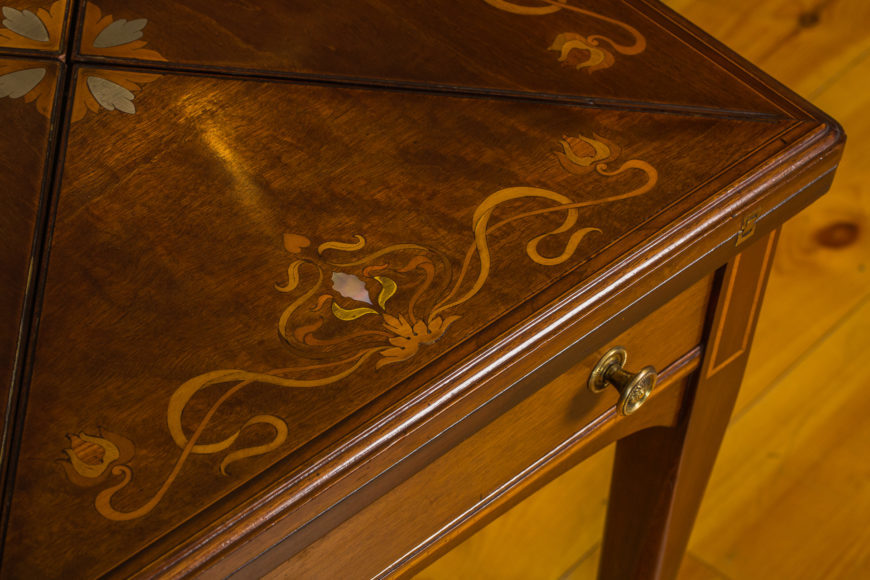
Image courtesy of www.historyextra.com
Boards for playing games such backgammon and chequers have been used since Tudor times. However, bar a few exceptions, it was only after the restoration of English monarchy in 1660, under Charles II, that tables were made specifically for games. Most card tables were rectangular, with a flap that opened up to reveal a playing surface. On early examples, linings tend to be velvet, or of needlework. The thin green felt like cloth that we associate with card tables, known as baize, only became popular in the early 1700s.
A unique selection of antique card & games tables.
When not in use, the flap was closed up, so that the table could be pushed against the wall. In the Neo-Classical period, semicircular card tables came into favour. The top opened to provide a circular playing area, and tables were decorated with marquetry or cross-banding. Several mechanisms were design to support the card table flap. Special tables were made for both games and cards.

During the 17th and 18th Centuries, games tables became increasingly popular, and increasingly intricate and elaborate, with fine inlay, marquetry and ornate detailing. Single tables sometimes allowed people to play several different games directly upon them, and many were a treasure trove of hidden drawers and flaps, like this fine example from the 17th Century.
Small side tables that could be used for gaming or decorative purposes, and smaller tables generally, such as consoles, became all of the rage. However such items were really only available to a small upper class minority.
It wasn’t until the Regency period and into the Victorian era, that card and gaming tables became more popular, and readily available to a wider number of people. With the industrial revolution, and other changes in society, came the development of a far larger middle and upper middle class. Card, board and parlour game became increasingly popular. Partly as the new middle classes now had parlours in which to play them, and more leisure time.
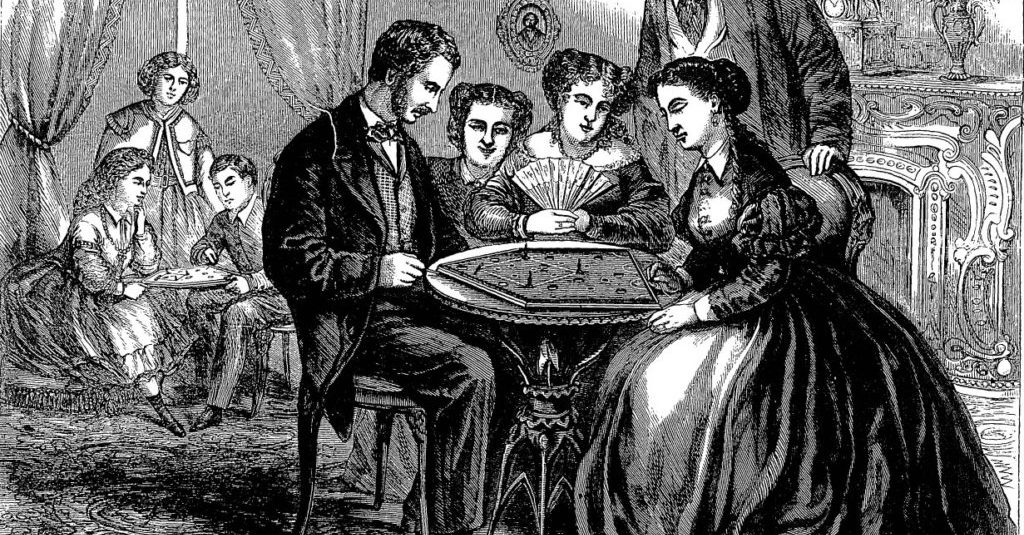
In Victorian times, a far larger number of people aspired to, and were able to achieve, a middle class lifestyle. The parlour was for welcoming guests, and for family activities. It was often the mostly finely decorated part of the house; and in early to mid Victorian times, no middle class parlour was complete without a games, card or ‘Loo’ table. Along with a number of other games, Loo was a popular card game even prior to the Victorian era.
A Loo table is usually round, but the main feature is that the solid surface folds down 90 degrees, so that it can be stored at the side of the room without taking up much space when not in use. In the world of antiques today, the meaning of the term ‘Loo table’, or ‘lanterloo’, has broadened, and these terms are sometimes used to describe any table that folds down in this manner. But originally and more accurately, it referred to a style of folding games table.
Parlour games of many kind were popular in Victorian homes, from blind mans buff, to twenty questions, and many more. Especially at Christmas time. In the early Victorian era, it was felt that children should engage in physical activity, but playing outside where they might become dirty was often frowned upon. So the parlour really was at the centre of family life.
The popularity of games and card tables grew and grew. However by the end of the Victorian era they were beginning to fall out of fashion a little, become rather passé by the Edwardian era. That said, these beautiful, now antique, games tables have seen a revival in popularity and relevance in todays world.
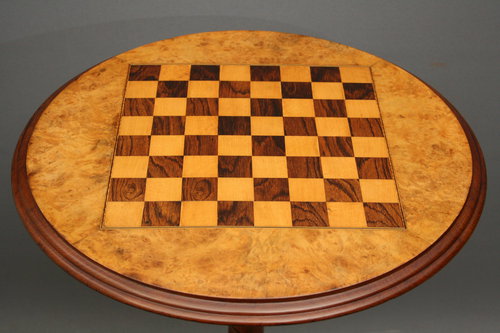
Antiques game and card tables have been making a revival in popularity for a variety of reason. They fit quite well with the quirky mix and match ethos of modern interior design with antiques. So they are more likely to be paired alongside other styles than in the past.
Console, or pier tables are a fabulous way to bring something old and timeless into a modern space, without taking up too much of that space. This is especially important for design with smaller spaces, where a larger antique item may simply not fit physically, even if it would look great.
A beautiful loo table of days gone by might make a perfect conservatory table in our modern world for example. It is possible to get really creative with finding new uses for these beautiful, already quirky items. There has also been a strong revival of interest in Victorian English culture is recent times with the steampunk movement, and a desire to re-enact and re-imagine Victorian life.
And what area could be more fun to reimagine than leisure time activity? On buying an antique games, card or console table, it is really fun to stop and think about people in the past using the item.
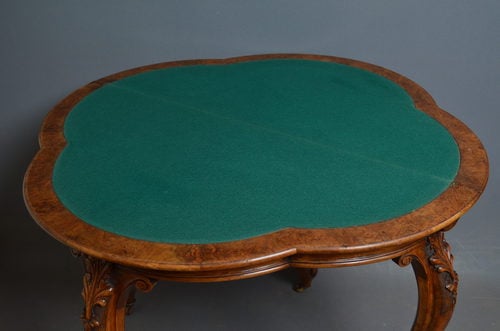
There has also been a great revival in interest in the Victorian Christmas experience over the past 20 years or so. From games to food and more. So rather than thinking of creative way to re-appropriate the item, it could well be put to its traditional use as a games table, especially during the festive season.
An antique card or games table might also make a very thoughtful gift for someone who loves chess, cards, draughts, backgammon and a whole variety of games. Or why not try some of these, and other traditional games, for yourself? There are so many to choose from, many of which we still play today. Spillikin, which was popular in Jane Austen’s time, is a variation upon pick up sticks, which we still play. Of course in those times the sticks would have been wooden.
Popular card games included a game called Bread and Honey, which was based upon the Sing a Song of Sixpence children nursery rhyme, where certain cards serve as ‘blackbirds’. Whist is said to have been the most popular card game in Victorian times. Combining skill and chance. It is still played today, and is said to be a precursor to the development of the modern game of Bridge. Hearts, where players would rid themselves of the suit, was also very popular. As was Loo, Old Maid, Snap and Ecarte. A number of gambling related card games had also long been in existence.

Snapdragon was an immensely popular parlour game to play on Christmas eve in Victorian England. It’s quite a dangerous game, as was Flapdragon, and we don’t recommended it! But it shows that leisure time in Victorian Britain wasn’t always the tame and civilised affair that we like to imagine.
To play Snapdragon, raisins were placed in a deep tray/large shallow bowl of brandy, and the bowl was set alight. The players then had to fish the raisins from the burning bowl. If they had any facial hair remaining, they might then like to play Questions and Commands, a variation upon Truth or Dare, Hoop and Hide, Look About or Charades to name a few.
For any further questions about games and card tables, or smaller antique tables in general, do not hesitate to get in touch with our friendly and experienced team of antiques experts.
View the selection of antique furniture we have for sale.
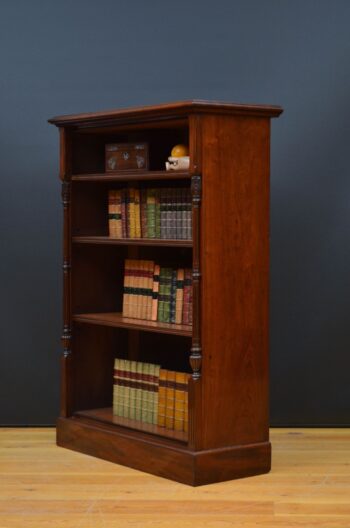 Victorian mahogany open bookcase
£1,685.00
Victorian mahogany open bookcase
£1,685.00
 Victorian Walnut Open Bookcase
£1,650.00
Victorian Walnut Open Bookcase
£1,650.00
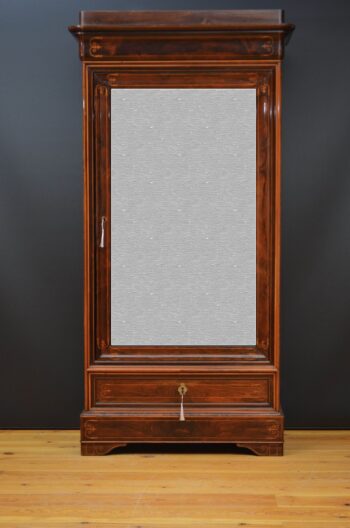 Antique French Rosewood Wardrobe or Bookcase
£2,500.00
Antique French Rosewood Wardrobe or Bookcase
£2,500.00
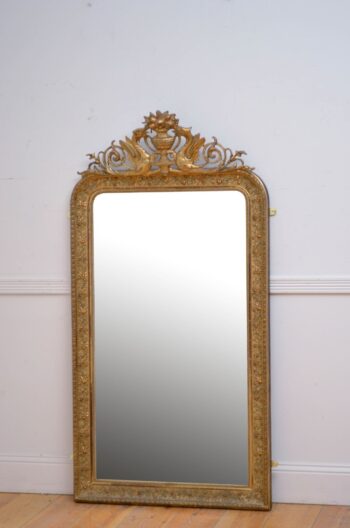 French 19th Century Gilded Pier Mirror H161cm
£2,600.00
French 19th Century Gilded Pier Mirror H161cm
£2,600.00
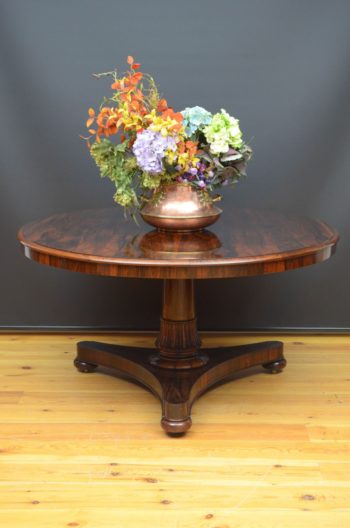 Fine William IV Centre Table Dining Table
£3,800.00
Fine William IV Centre Table Dining Table
£3,800.00
| Cookie | Duration | Description |
|---|---|---|
| cookielawinfo-checbox-analytics | 11 months | This cookie is set by GDPR Cookie Consent plugin. The cookie is used to store the user consent for the cookies in the category "Analytics". |
| cookielawinfo-checbox-functional | 11 months | The cookie is set by GDPR cookie consent to record the user consent for the cookies in the category "Functional". |
| cookielawinfo-checbox-others | 11 months | This cookie is set by GDPR Cookie Consent plugin. The cookie is used to store the user consent for the cookies in the category "Other. |
| cookielawinfo-checkbox-necessary | 11 months | This cookie is set by GDPR Cookie Consent plugin. The cookies is used to store the user consent for the cookies in the category "Necessary". |
| cookielawinfo-checkbox-performance | 11 months | This cookie is set by GDPR Cookie Consent plugin. The cookie is used to store the user consent for the cookies in the category "Performance". |
| viewed_cookie_policy | 11 months | The cookie is set by the GDPR Cookie Consent plugin and is used to store whether or not user has consented to the use of cookies. It does not store any personal data. |